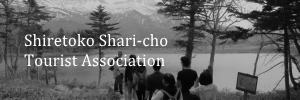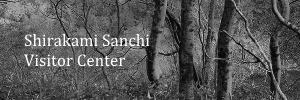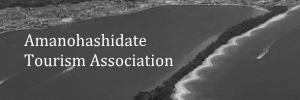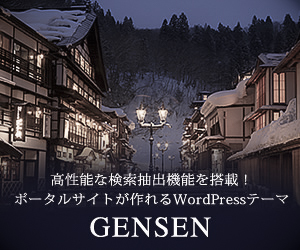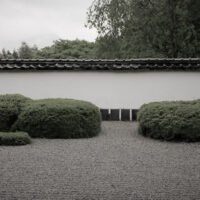Overview
The Jomon Period in Japan roughly corresponds to the Mesolithic and Neolithic Periods in the world history. After the Last Glacial Maximum, which was the coldest period during the latest Ice Age, around 21,000 years ago, the temperature became gradually warmer globally. The glaciers and ice sheets covering the earth’s surface started melting, and the sea levels became higher. And the Japanese archipelago was once again, and for the last time, separated from the Eurasian Continent around 13,000 years ago, becoming almost identical to what we see today on a map.

By that time, massive mammals, such as mammoths and Naumann’s elephants, had already been extinct, greatly changing the animal distribution on the ground. The vegetation in Japan was also beginning to change. Conifer forests, which had occupied most of the land, were, little by little, replaced by deciduous broad-leaf trees, like oak, beech, chestnut, and walnut. Since these trees bore edible nuts in autumn, people began to collect these nuts, learned to preserve them, and eventually, came to settle in one place for a long time.
They lived in a simple structure called a tateana-jukyo (a pit dwelling house) with a sunken earth floor and wooden pillars. It is generally understood that with these changes in people’s lifestyle, which were originally brought about by the global climatic and environmental change, the Paleolithic Period ended and the Jomon Period began in Japan.
The Bow and Arrow
There were several other characteristics that marked the difference between the Jomon Period and the preceding Paleolithic Period. The emergence of the bow and arrow was one of them. This new hunting gear reflected the change in their hunting targets. With huge, but rather slow, elephants already gone, they had to hunt down more fast and nimble animals in the woods, such as wild boars and deer. Since those animals were difficult for them to hunt with only conventional tools like spears, the bow and arrow was a perfect replacement.

Jomon People continued to use the chipped stone tools. But their tools were more sophisticated and diversified than the Paleolithic ones. The Paleolithic people surely had the technique for polishing a stone partially. But the polished stone tools of the Jomon Period were much more refined works. The Jomon people were also able to make fishing tools, such as hooks and harpoons, out of animal bones or horns. But they had not yet had metal vessel production techniques as well as the full-scale rice cultivation method (like the kind used with large paddies).
Jomon Earthenware
The most important difference between the Paleolithic and Jomon cultures is the emergence of earthenware in the Jomon Period. The Jomon Period in Japan is sometimes described simply as “the time people made a great number of earthenware.” In fact, there is no better representation of the period than the group of earthenware with their striking designs, which appeared in the middle of the Jomon Period. Some of the earthenware had elaborate ‘straw-rope’ patterns on the surface, while others had complex ‘flame-like’ decorations on the rim.

There is no doubt that those earthen vessels with noticeable designs are iconic works from the period. Even today, their bold, primitive charm attracts many people, and museums occasionally hold their exhibitions. However, it is not the case that all Jomon vessels are eye-catching like those. Throughout the long Jomon Period spanning well over 10,000 years, people produced a variety of earthenware. And also, there were regional differences. For instance, earthen vessels from the earliest period of Jomon are generally simple and plain ones with no patterns or decorations on the surface. Furthermore, few straw-rope patterned vessels have been discovered in the Kyushu Region, including the islands of Okinawa.

It is not clear whether a earthenware-making technique was originally introduced to Japan from the Asian continent or if it was invented domestically. The oldest fragments of earthenware ever discovered in Japan date back some 16,500 years ago. (Based on this fact, some archeologists argue that the Jomon Period in Japan really starts at around this point.) They were the ones unearthed from the Odai Yamamoto Site in Aomori Prefecture (in the Tohoku Region). Interestingly enough, archaeologists have also discovered pottery fragments from almost the same period in South China (at several sites along the Yangtze River) as well as in Russia (in the areas along the Amur River). But it seems that there are no connections between these findings.
In any case, it is certain that earthenware brought about a big change in people’s lifestyle in the Jomon Period. It enabled people to preserve or cook their food. People came to be able to eat some kind of soup or stew with fish, shellfish, or animals. Things like acorns and plant roots surely became easier to eat after boiling. Boiling also removed their bitterness (bitter components were sometimes toxic). So, researchers believe that thanks to earthenware, Jomon people could enjoy a far richer dietary life than their Paleolithic counterparts by taking in all of the nutrients from each of their foods.
Shell Mounds
We can see glimpses of Jomon people’s lives by examining shell mounds. A shell mound (貝塚) is another feature that characterizes the Jomon Period very well. It is a place where ancient people used to dump their daily household waste. True to its name, a large amount of shells have been found there, but animal bones, bone tools, pottery fragments, and in very rare cases, human bones, can also be unearthed in their relatively well-preserved states. This is because, once people dump shells into a pit, the calcium component from them seeps into the ground. And it turns the acidic soil into alkaline soil. That prevents some materials in the same pit from easily decomposing.

Ancient shell mounds are not unique to Japan. People have discovered many shell mounds all over the world. The coastal areas in North China as well as in the Korean Peninsula also have a large number of them. Out of over 25,000 shell mounds discovered in Japan, the Omori shell mound in the Kanto Region is especially famous. This is because that is the first shell mound in the country to have been studied by academics. It was in 1877, and an American zoologist named Edward S. Morse led the excavation. One day, during a train trip between Yokohama and Tokyo, Morse happened to notice an area of land where a bunch of white shells was visible. Later he asked the Japanese government for permission to excavate, and the rest is history.

He published a report a couple of years later. And that report was probably the most significant one among his many accomplishments. In the report he used the term ‘cord marked’ to describe the pieces of pottery he found. The term was eventually translated into Japanese as ‘Jomon’. And it became the name to express the particular type of pottery as well as the whole era during which people used those vessels. The kanji characters for Jomon (縄文) mean ‘staw-rope pattern’. Today, in honor of Morse’s research, people in Japan sometimes refer to the Omori shell mound as the ‘birthplace of Japanese archaeology’.
Sannai Maruyama Site
Today, when we Japanese hear the word ‘the Jomon Period,’ some people still picture a bearded half-naked man holding a spear. Well, that kind of image may not be completely wrong (because the Jomon people were still basically hunter-gatherers, anyway). But such a primitive lifestyle might have become slightly obsolete by the middle of the Jomon Period. After several excavations conducted throughout the country in the 1990s, researchers discovered a lot of new facts about the lives of the Jomon people. And these new findings have greatly changed our conventional views about them.

Until the late 20th century, researchers believed that the Jomon people relied completely on hunting and gathering. But studies revealed that people were already doing the plant cultivation in some regions by the middle of the Jomon Period. For example, some pieces of evidence suggest that Jomon people cultivated soybeans in several places in the Kyushu Region as well as in the main island of Honshu.
Above all, the excavation of the Sannai Maruyama Site in Aomori Prefecture (in the Tohoku Region) and what subsequently became clear through extensive research surprised many people. People already knew the existence of this site in the Edo Period (1603 – 1867). This is because fragments of pottery or clay figurines called dogu (土偶) were sometimes unearthed even at that time. But in 1994, during a survey for the purpose of building a prefectural baseball stadium, researchers found six large pieces of chestnut tree trunks. And that led them to think that these had been the pillars of something large and the site used to be a large ancient settlement. Realizing the significance of this discovery, the prefectural government then decided to halt the stadium construction and embarked on research and a full-scale excavation.

Today, archaeologists think that the Sannai Maruyama was a flourishing Jomon village which lasted for as long as some 1,500 years, from about 5,500 to 4,000 years ago. Many findings tell us that the villagers were intelligent people. They were compassionate and they cherished the memory of their ancestors. They arranged the graves neatly on both sides of the streets and buried children carefully in earthenware.

What surprised people the most was how big some of the buildings were and how well organized the entire village was. They found about a dozen traces of huge pit dwelling houses, and the largest of them spanned about 32 meters in length and 9.8 meters in width. With a total floor space of 250 square meters, this one is the largest pit house in Japan. Now, there is a reconstructed version of this structure in the compound, and we can actually enter into it to see its interior. It is not clear what purposes people used this structure for. But researchers think it was some kind of communal hall or a workshop for the village residents.
Another important reconstruction in the compound is the large ‘six-pillar structure’. It is one of the highlights for visitors to the Sannai Maruyama Site. First, they discovered the six holes (which I mentioned above), each with a diameter and depth of about two meters. These holes were neatly arranged in two rows 4.2 meters apart. And in each hole, there remained the remnant of a chestnut tree trunk. This finding led them to think that this was a large building supported by six huge pillars made out of chestnut tree trunks. Again, the purpose of this structure is unclear. Some speculate that it was a watch tower, while others think people used it for some religious purposes.

Other than the huge buildings mentioned above, there were a considerable number of smaller structures. It seems most of them were obviously typical pit-dwelling houses. But several of them were seemingly pillar-supported buildings with a raised-floor. It is because researchers couldn’t find any signs of flooring or hearth on the ground. As with the large ‘six-pillar structure,’ the pillars of these buildings were arranged with an equal space.
The total area of Sannai Maruyama Site spans about 35 hectares. It is seven times larger than the area of the Tokyo Dome baseball stadium. This site had a large garbage dump in the area which we now call the Northern Valley, as well as a huge ‘earth mound’ called morido at the south, north, and west sides of the compound. The heights of these mounds are, in some parts, taller than an average human.

Huge amounts of artifacts have been unearthed from the garbage dump and mounds. The total amount of pottery fragments excavated at the Sannai Maruyama Site was very large. And because of that, tens of thousands of crates were required to store them. Also, excavators have discovered more than 1,500 pieces of dogu figurine from the northern and southern mounds. Some researchers assume that these figurines were generally used for some kind of religious or shamanistic purposes on occasions such as festivals. Other findings include various types of ornaments and tools made of jade or obsidian. These materials were not indigenous to the region. So it is obvious that trade had already been conducted actively between several places across the country.
In addition to these visible findings, extensive scientific research revealed a couple of facts. For example, they analyzed the DNA of the chestnuts excavated at the Sannai Maruyama Site. And they concluded that those chestnut trees were not the wild species but the cultivated ones. Studies of pollen traces in the soil also suggested that, in the middle of the Jomon Period in Japan, there were chestnut tree forests close to the settlement. Being resistant to moisture, chestnut lumber is an ideal material for home construction. So, researchers assume that people at Sannai Maruyama cultivated chestnut trees not only to eat their nuts, but also to use them as a building material when there was a need.

All of these findings from the Sannai Maruyama Site surprised us a lot in the 1990s. They presented to us a much more cultured, intelligent, and organized image of Jomon people than we had imagined them to be. Today, archaeologists think that the Sannai Maruyama Site was not an isolated settlement in that remote area of Aomori Prefecture but was part of much larger settlement that spread over the surrounding prefectures including Hokkaido. And there has been an active campaign by people in Hokkaido and the prefectures of Aomori, Akita, and Iwate, aiming for its entry into the UNESCO World Heritage list. (See Update 1 at the bottom of this post.)

End of the Jomon Period
The technique of rice cultivation in the paddy field was introduced to Northern Kyushu through the Korean Peninsula around 900 BCE (although there are still some controversies over the exact date of this). And it eventually spread to the main island of Honshu. And it is generally understood that it was around this point that the Jomon Period finally ended and a new era, the Yayoi Period, began in Japan.
| Update 1 (Added in January 2022): On July 27, 2021, the UNESCO World Heritage committee finally registered the Sannai Maruyama Site on its world heritage list, together with other 16 archaeological sites across Hokkaido and Northern Tohoku. The official registeration name is “Jomon Prehistoric Sites in northern Japan.” |
Photo Credits and Sources
Photographs by Koji Ikuma and T. Terada, unless otherwise noted. (Featured Photo: Jomon village recreated at the Hamamatsu City Museum, taken on June 26, 2020.) Sources for this post include: 中橋孝博『日本人の起源~人類誕生から縄文・弥生へ~』講談社 (2019).
Outbound Links (New Window)














